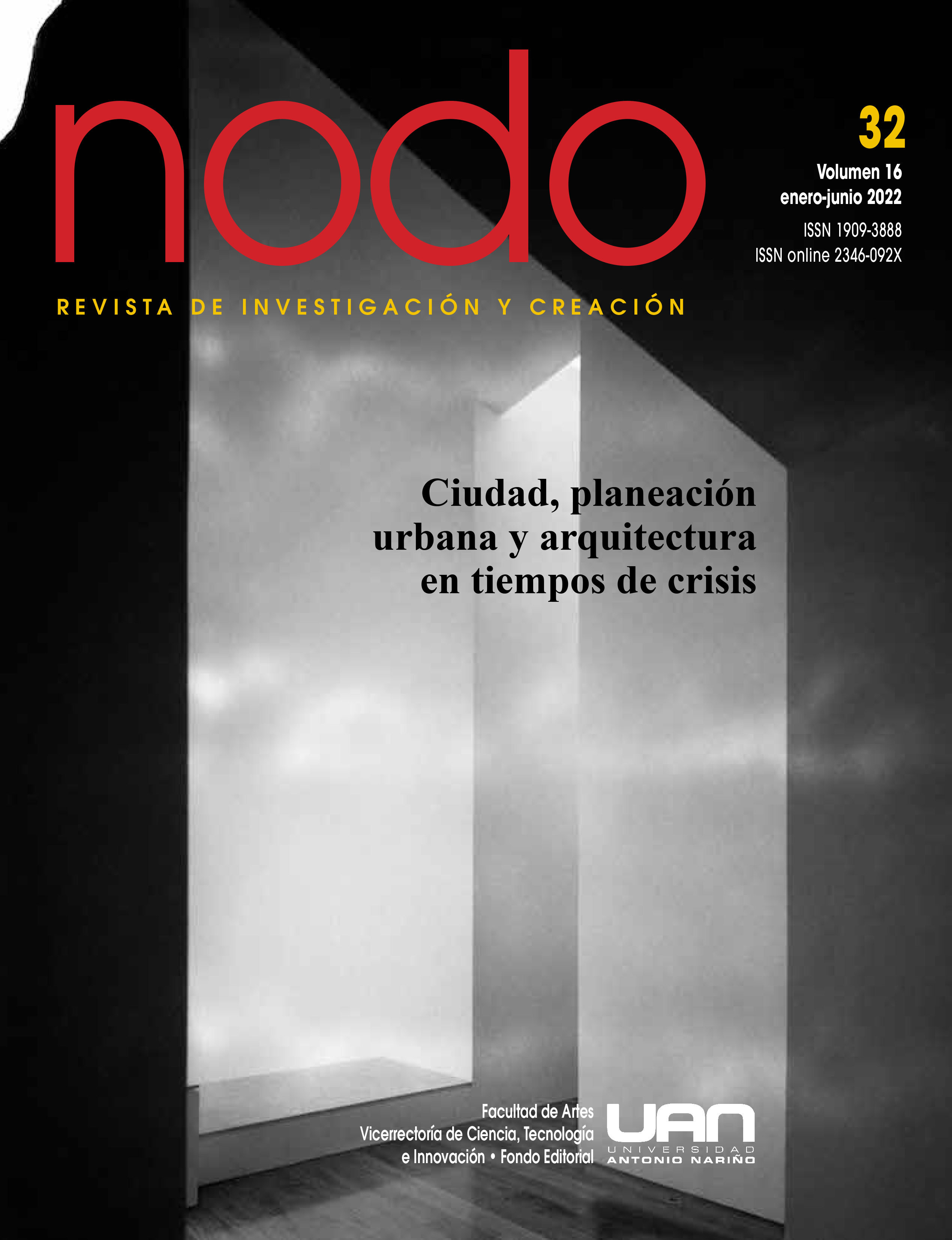La nueva normalidad y su renovación sígnica en el espacio arquitectónico
DOI:
https://doi.org/10.54104/nodo.v16n32.1340Palavras-chave:
apropiación, espacio, habitabilidad, proxémica, significadoResumo
Tras la pandemia del SARS-CoV-2, la nueva normalidad es real y se está asimilando poco a poco, por lo que es necesario intentar esclarecer el habitar del espacio arquitectónico junto con la indagación pragmática de su usuario. Estos elementos esbozan una imagen del espacio en el que es posible apreciar la coexistencia arquitectónica como un todo cubierto bajo la teoría semiótica de los signos. Existen diferentes maneras de entender la arquitectura, y su diseño se considera una actividad formal y funcional. El alejamiento cognitivo de la arquitectura racionalista generó una crisis que condujo hacia una aplicación del método científico con el propósito de liberarse de todo concepto formal, donde no hay una representación de los espacios, sino una configuración ligada al valor funcional de éstos. Como consecuencia, el proceso proyectual avanza desde el interior hacia el exterior.
Downloads
Referências
Breilh, J. (2010). Las tres “S” de la determinación de la vida. 10 tesis hacia una visión crítica de la determinación social de la vida y la salud. En R. Passos Nogueira, Determinação Social da Saúde e Reforma Sanitária. Rio de Janeiro: CEBES, pp. 87-125.
Echeverría , B. (2015). Siete aproximaciones a Walter Benjamin. Bogotá: Ediciones Desde Abajo.
Eco, U. (1973). Introducción al estructuralismo. España: Alianza.
Ferrarotti, F. (1991). La historia y lo cotidiano. España: Península.
Hall, E. (2003). La dimensión oculta. México: Siglo XXI.
Laitman, M. (19 de octubre 2020). Dr. Michael Laitman. Acceso: 30 de octubre de 2020, de Para cambiar el mundo cambia al hombre: http://www.michaellaitman.com/es/
Le Quang, M., & Vercoutère, T. (2013). Ecosocialismo y buen vivir. Diálogo entre dos alternativas al capitalismo. Quito: IAEN.
Lefebvre, H. (2013). La producción del espacio. Madrid: Capitan Swing.
Menéndez E. L. (1988). Modelo médico hegemónico y atención primaria. Segundas Jornadas de Atención Primaria de la Salud, 30 de abril a 7 de mayo, Buenos Aires. México, CIESAS, pp. 451- 464.
Morris, C. (1946). Signos, lenguajes y conductas. Buenos Aires: Losada.
Muntañola Thornberg, J. (2000). La arquitectura como puente (semiótico) entre naturaleza y cultura. En A. Gimatr Welsh, Ensayos semióticos dominios, modelos y miradas desde el cruce de la naturaleza y la cultura. Puebla: Miguel Ángel Porrúa, pp. 201-213.
Solano, E. E. (2012). Crítica arquitectónica sistémica. Enfoque cognitivo y simbólico del fenómeno de la supermodernidad en México. Toluca, Estado de México: Universidad Autónoma del Estado de México.
Thompson, J. (1998). Ideología y cultura moderna. Teoría crítica social en la era de la comunicación de masas. México: Universidad Autónoma Metropolitana-Xochimilco.
Downloads
Publicado
-
Resumo293
-
PDF (Español)450
Como Citar
Edição
Seção
Licença
Copyright (c) 2022 Universidad Antonio Nariño

Este trabalho está licenciado sob uma licença Creative Commons Attribution-NoDerivatives 4.0 International License.




 Portal de Ciencia Abierta
Portal de Ciencia Abierta